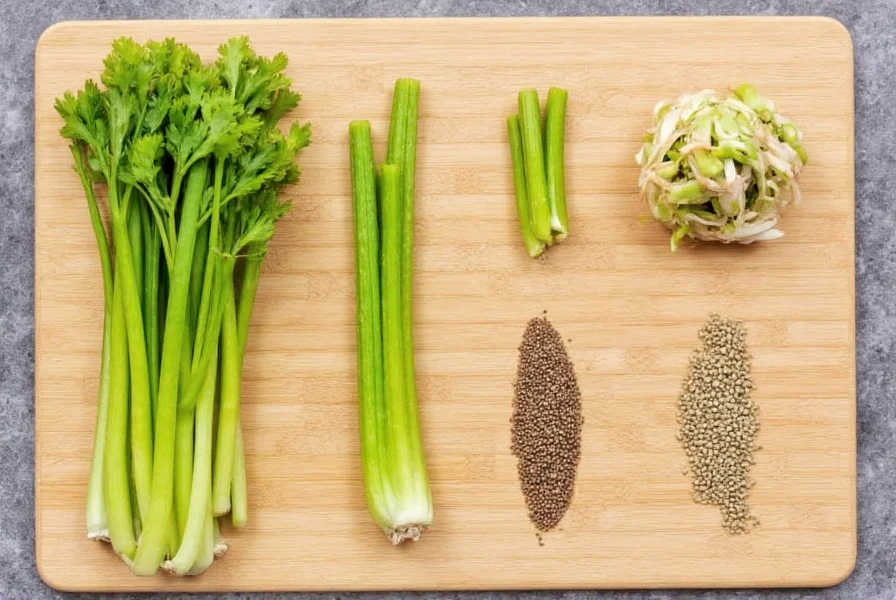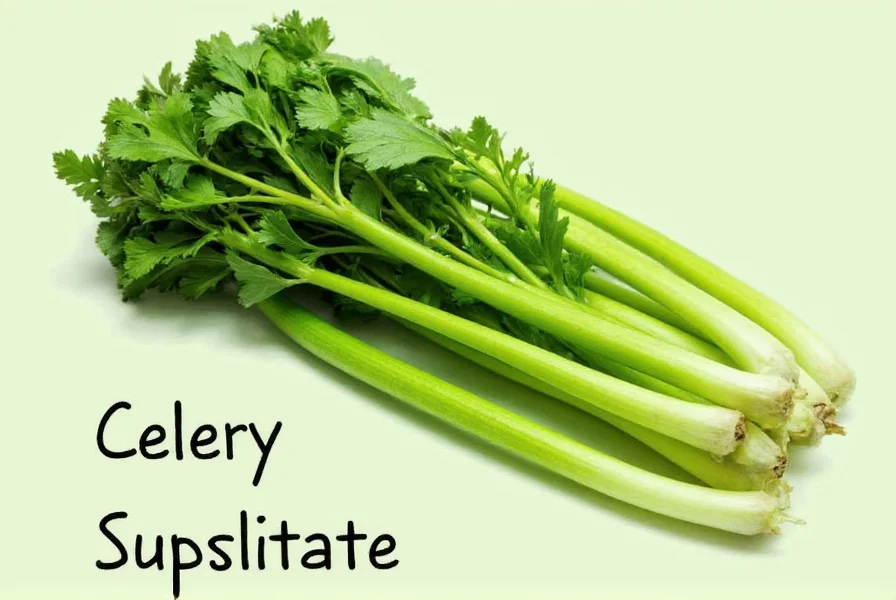Understanding the relationship between celery seed and fresh celery is essential for successful recipe adaptation. Many home cooks mistakenly believe celery seed can directly replace fresh celery stalks, leading to disappointing results. The truth is more nuanced and depends entirely on your specific cooking application.
Understanding Celery vs. Celery Seed
Celery seed comes from the fruit of the celery plant (Apium graveolens), while the familiar crunchy stalks are the plant's petioles. This biological difference explains their dramatically different culinary properties:
| Property | Fresh Celery Stalks | Celery Seed |
|---|---|---|
| Flavor Profile | Mild, vegetal, slightly salty with subtle herbal notes | Intensely concentrated, earthy, slightly bitter, with pronounced herbal notes |
| Texture | Crisp, high water content (95% water) | Hard, dry seed with no moisture |
| Primary Culinary Role | Provides texture, moisture, and subtle background flavor | Delivers concentrated flavor punch |
| Substitution Ratio | 1 stalk = N/A | 1 tsp celery seed ≈ flavor of 2-3 stalks (in cooked dishes only) |
When and How to Use Celery Seed as Part of a Substitute
Celery seed works best as a flavor component rather than a complete replacement. Understanding celery seed conversion to fresh celery ratios prevents overpowering your dishes:
- For soups, stews, and braises: Use ⅛-¼ teaspoon celery seed per cup of liquid along with diced parsnips or carrots to mimic both flavor and texture
- In spice blends: Celery seed shines in homemade celery salt (1:4 ratio with salt) or as part of mirepoix alternatives
- For dressings and marinades: Steep ½ teaspoon celery seed in warm oil for 10 minutes, then strain before using
Avoid using celery seed as the sole substitute in raw applications like salads or crudités, where texture matters as much as flavor. This common mistake when attempting how to substitute celery seed for celery stalks leads to dishes that taste overwhelmingly of seed without the desired crunch.

Best Substitutes by Recipe Type
The ideal celery alternatives for cooking depend on whether your recipe relies on celery for flavor, texture, or both. Consider these targeted replacements:
For Soups and Stews
When seeking the best celery replacement in soup, combine approaches:
- Fennel bulb: Provides similar texture and a mild anise flavor that complements most savory dishes (use 1:1 ratio)
- Parsnips: Offer comparable earthiness with slightly sweeter notes (use ¾ cup diced parsnip per cup of celery)
- Leek greens: Provide mild onion flavor with similar fibrous texture (use dark green parts only)
For Salads and Raw Applications
For celery substitute for salads, prioritize crunch and mild flavor:
- Fennel: Nearly identical crunch with subtle licorice notes (slice very thin)
- Cucumber: Provides similar water content and crunch (peel if waxed)
- Endive or radicchio: For bitter salads, offers comparable crispness with more pronounced flavor
For Stuffings and Casseroles
The celery replacement in stuffing should provide both flavor absorption and structural integrity:
- Bell peppers: Red or yellow peppers add sweetness and maintain shape during baking
- Water chestnuts: Provide exceptional crunch that holds up to cooking
- Combined approach: ½ cup diced carrots + ¼ cup celery seed-infused broth mimics both texture and flavor
Common Substitution Mistakes to Avoid
Many cooks make critical errors when attempting what to use instead of celery in recipes. Steer clear of these pitfalls:
- Using celery seed alone in raw dishes: The concentrated flavor becomes overwhelming without cooking to mellow it
- Incorrect ratios: More than ½ teaspoon celery seed per pound of ingredients usually dominates other flavors
- Ignoring texture needs: In dishes like Waldorf salad or tuna salad, celery's crunch is irreplaceable by seed alone
- Substituting in delicate dishes: Celery seed's strong flavor overwhelms subtle preparations like consommé or light broths
Creating Balanced Substitutions
Successful celery seed substitute for fresh celery requires understanding what role celery plays in your specific recipe. Ask yourself:
- Is celery primarily providing flavor, texture, or both?
- Will the dish be cooked or served raw?
- How prominent should celery flavor be in the final dish?
For most home cooking applications, a two-part approach works best: use celery seed for flavor depth and another vegetable for texture. This method delivers the most authentic results when you're out of fresh celery.











 浙公网安备
33010002000092号
浙公网安备
33010002000092号 浙B2-20120091-4
浙B2-20120091-4